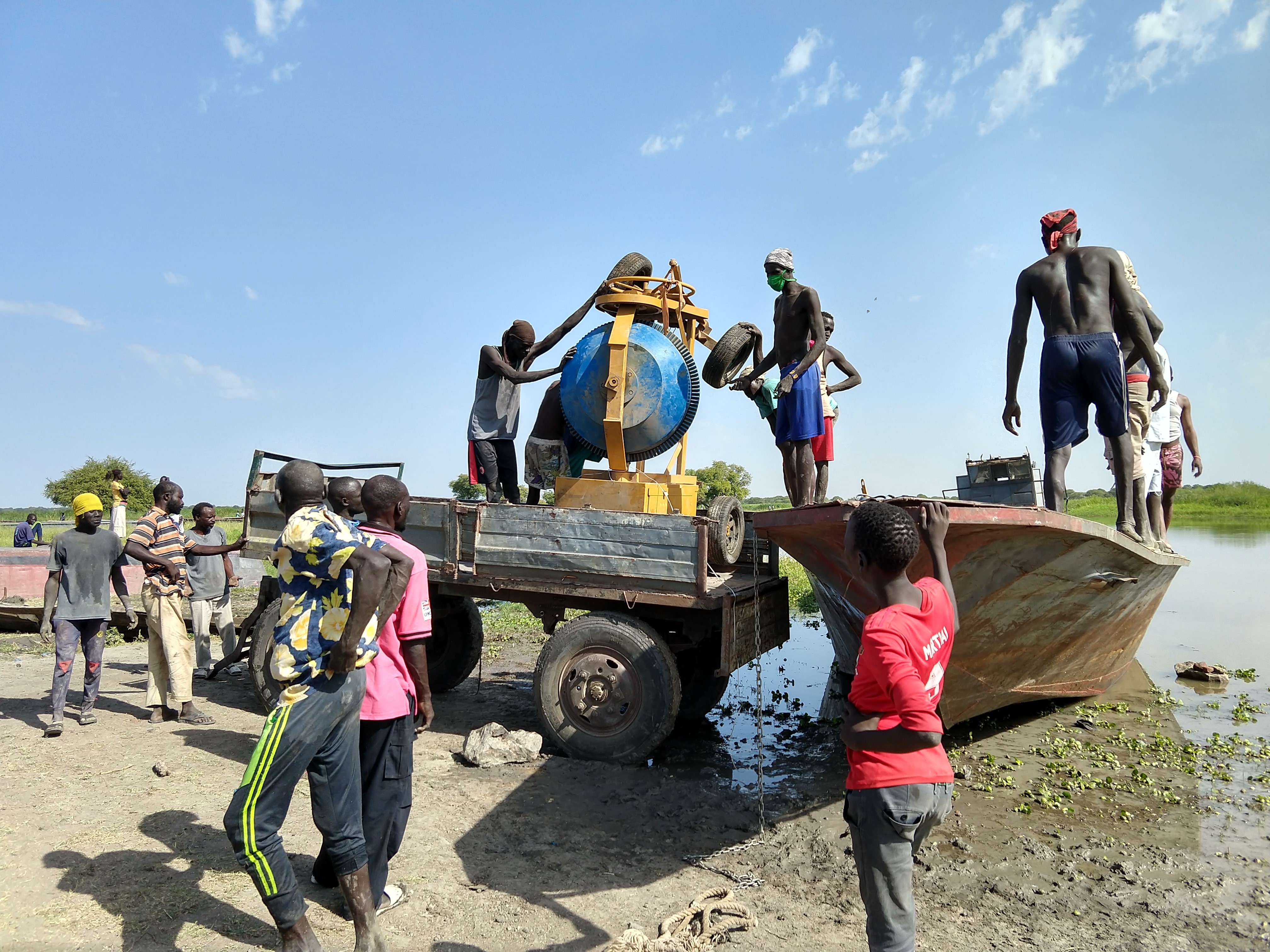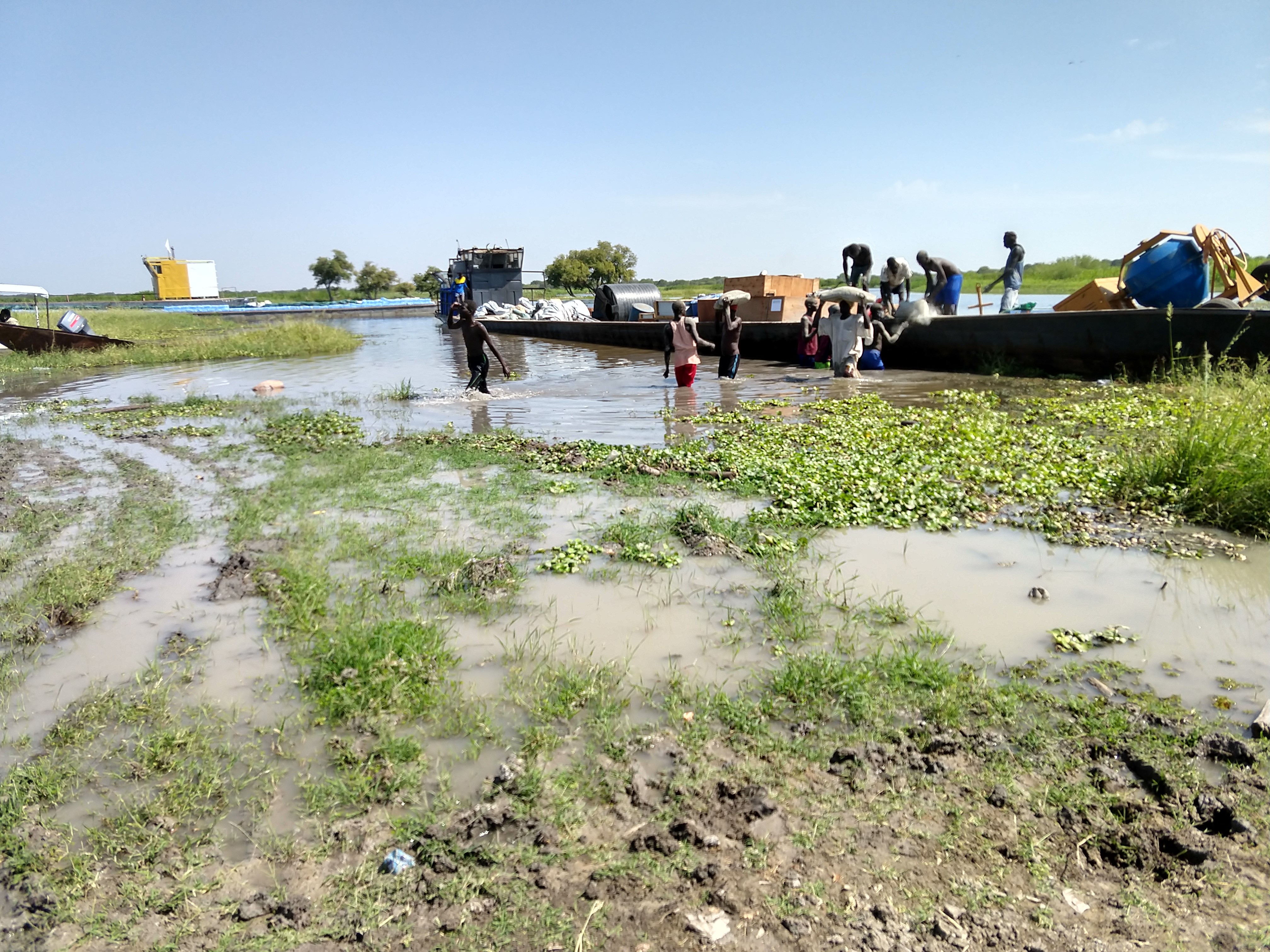Per-Erik Eriksson's story from South Sudan
Logistics in South Sudan - From an MSB Logisticians perspective. “I thought it was difficult in DR Congo...”
In South Sudan, MSB is currently building eight humanitarian hubs in cooperation with International Organization for Migration, IOM. The hubs will facilitate for INGOs, NGOs and UN agencies to decentralize operations and reach population in the remote regions around each hub. This makes establishment of new humanitarian programmes easier and it contributes to give aid and relieve distress for the population that have been forced to leave their homes due to many years of war and distress throughout South Sudan
Offloading concrete mixer, Photograph: Mikael Nyman, deputy Head of Operation in Juba, South Sudan
From my point of view, the best thing with this project is that the hubs are designed with sustainability in mind. They will be easy to maintain and run by locally established INGOs or NGOs on a cost recovery basis and with low environmental impact. One of the features is therefore a solar power system that will supply all energy needed for lights, fans, water treatment and so on. These systems are donated by Danish Emergency Management Agency, DEMA and designed by and purchased from a South Sudan based company. Being a strong proponent for solar power development in Africa, I really like this approach, not least since it will develop the locally based capacity for further development.
The current status of the project is that the first hub is under construction to be finished and handed over in April. At the same time, the second hub is in initiation and we are currently shipping out all material that will be needed there. Which brings us to the logistics…
I had heard about it before but the more I work here, the more apparent it becomes that logistics in South Sudan is among the most difficult in the world. To start with, the country is around 40 percent bigger than Sweden and the total amount of roads with tarmac is about 300 km. The rest is, at best, gravel roads but the normal soil and locally available road construction material is rather mud – in worst case the “black cotton soil”. In the rainy periods, the roads therefore very quickly become impassable. This and last year, we have also seen the worst flooding for many years – resulting in a road network that has been essentially closed for at least nine months to our hub locations.
The normal solution for humanitarian logistics is to revert to air freight with planes and in many cases complemented with helicopters, the latter since many of the airstrips are also unusable in the wet season. The negative environmental footprint of air freight is well known nowadays – and the cost issue is another drawback, of course.
So, when looking at how we could transport all our material to our first hub project and realising that river transport could be a possibility, I was really thrilled. This hub is located just by the river Nile, over 800 km downstream from our base in the capital Juba. River freight can be done along the entire river through the country and has always been a primary mean of transport in South Sudan, but declined drastically during the years of conflict. Now, it is picking up again. For efficiency, cost and environmental reasons we therefore successfully tried transport with a river barge. Yes, it was actually efficient. Even though I was pretty nervous during the 12 days it took for the barge to reach the destination, the fact that we did not need to change transport modes and reload the cargo anywhere actually saved us both time and effort. In addition, we saved somewhere around 4 tons of CO2 emissions compared to flying the cargo. The cost, finally, was only marginally lower. This surprised me until I found out that the barge had to stop and pay dues at about 40 river checkpoints along the way. The loading and off-loading without any proper harbours with lifting and transport aids is an additional challenge as shown in the pictures. The team on the ground did a tremendous job!
Now, we are in the midst of sending out the corresponding shipment to the second hub construction project. This time we will choose the road for much the same reasons that we choose boat to the first location. But while the flying distance is this time just over 400 km, the only accessible road will be 1150 km. And it is probably only accessible for two months this year. So, we will waste no time and send two full trucks as soon as possible.
My previous experiences from DR Congo have helped me in understanding that things take more time than you expect and are more complicated – even quite a bit more complicated here…. But, I love the work almost every day, particularly getting to practically influence the operations towards further increased sustainability.
Time to get back to the warehouse for packing and loading. The roads are opening up!
Per-Erik Eriksson’s, Camp Logistician Officer


